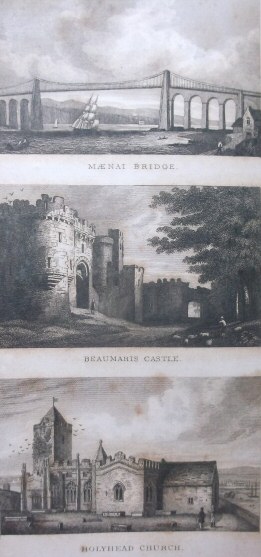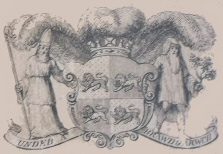Transcribed from the 1833 T. T. and J. Tegg edition by DavidPrice,
SCENES
IN
NORTH WALES.
WITH
HISTORICAL ILLUSTRATIONS, LEGENDS,
AND
BIOGRAPHICAL NOTICES.
BY
G. N. WRIGHT, A. M. P. A. R. H. A.
AUTHOR OF “WELSH TOPOGRAPHY,”“ILLUSTRATIONS OF IRELAND,” ETC.
Embellished with Thirty-sixEngravings.
LONDON:
PRINTED FOR T. T. AND J. TEGG, CHEAPSIDE:
R. GRIFFINAND CO. GLASGOW;
J. CUMMING AND W. F. WAKEMAN,DUBLIN.
p. iiCHISWICK:
PRINTED BY C WHITTINGHAM.
p.iiiPREFACE.
There is a local interest attachedto mountain scenery, arising not only from a naturalconcentration of grand and majestic objects, but also from aspirit of independence and ardent love of liberty with which themountaineer, invariably, seems to be inspired.
The great deeds of Leonidas were done amidst the rocks andglens;—Switzerland displays her hatred of tyranny in anundying affection for the memory of Tell;—while from thechivalrous exploits of Glandwr, brandishing high the torch ofliberty, a stream of light has issued, that seems to have pouredits rays into the deepest recesses of his native glens.
The demi-anarchy of the feudal system occasioned the erection,in Gwynedd, of many stately castles, whose lonely ruins now adornthe petty kingdoms they once overawed. And in the violentstruggles of the ancient Briton p. ivto preserve his wild home from Saxonintrusion, originated those yet more splendid palaces, thatillustrate like monuments, or like medals, the history of thoseperiods in which they were erected.
Notwithstanding the great power by which the Cambrians wereoverthrown, and the healing measures subsequently pursued toobtain a willing submission to their conquerors, the draughtappears to have been imbittered by the introduction of someingredient not easily detected by historical analysis; for, as apeople, the ancient Britons are still totally distinct from theparent state in customs, manners, dre


